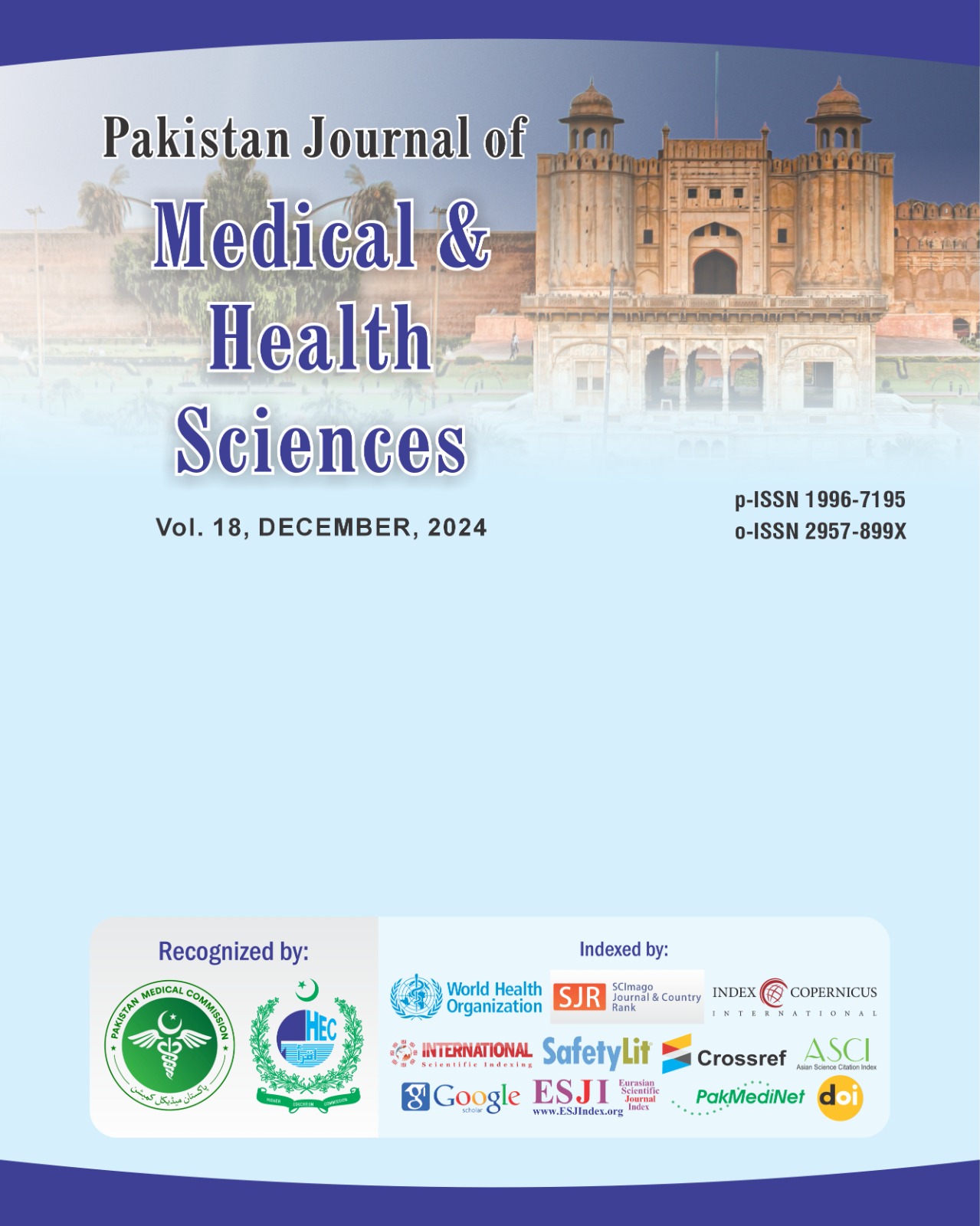Oral Throxin Dose Adjutment in Total Thyroidectomy Patients in Benign Thyroid Disorders
DOI:
https://doi.org/10.53350/pjmhs020241812.26Abstract
Objective: The purpose of this research was to identify the optimal oral thyroxin dosage for individuals with benign thyroid disorders who had undergone a complete thyroidectomy.
Methods: Included in the study were 75 adult patients who had a complete thyroidectomy for noncancerous thyroid issues. Initially, they were prescribed 75 µg of thyroxine and were then given further doses every two months until they reached euthyroid state on two separate visits. Age, sex, weight (both actual and lean), body mass index (BMI), and biochemical data (triiodothyronine, thyroxine, thyroid-stimulating hormone) were all assessed at this point. All data were analyzed using SPSS 23.0.
Results: There were majority 47 (62.7%) males and 28 (37.3%) females among all cases. Mean age of the cases was 43.7 years. Majority of the cases had nodular colloid goiters, followed by ashimoto’s thyroiditis, lymphocytic thyroiditis and follicular adenoma. Optimal thyroxine dose was best predicted by BSA (0.895, P < 0.01) and LBM (0.899, P < 0.01), but body weight (0.754, P < 0.01) and BMI (0.478, P < 0.01) were also strong predictors. The patient's age was the least significant factor in our study (r = 0.104, P < 0.01). The correlation between gender and thyroxine dosage was not statistically significant. The average dosage of thyroxine for each patient was 1.64 µg/kg of body weight.
Conclusion: Based on our findings, thyroxine replacement that takes BSA or LBM into account is superior to that which solely takes BMI or weight into account.
Keywords: T4 dose, total thyroidectomy, benign thyroid disorders, thyroxine dose, BMI, BSA, IBM
Downloads
How to Cite
Issue
Section
License
Copyright (c) 2025 Samar Memon, Awais Iqbal, Saima Gul, Shakeela Qazi, Nosheen, Syed Asad Ali, Tufail Ahmed Baloch, Sidra Jabeen

This work is licensed under a Creative Commons Attribution 4.0 International License.


